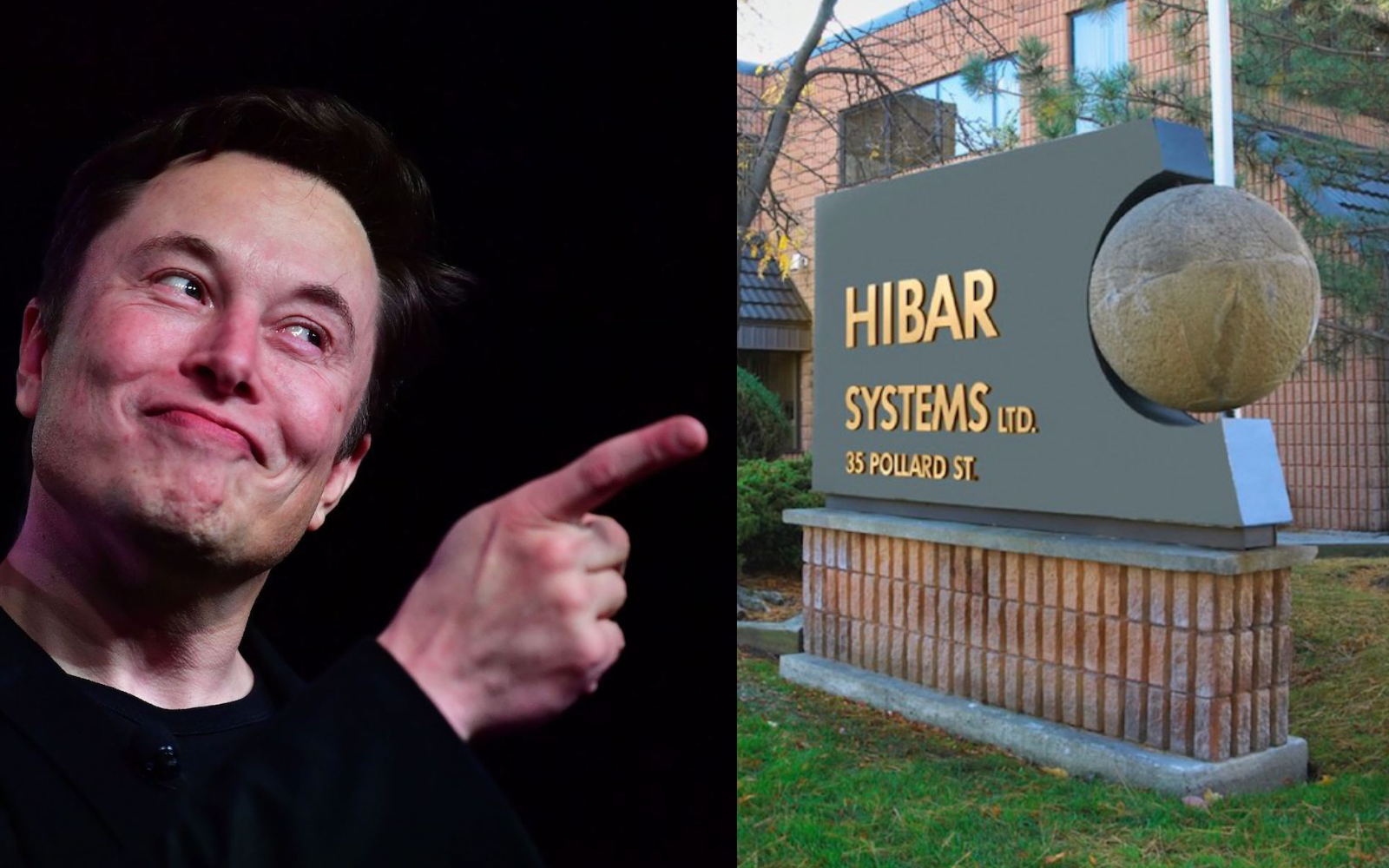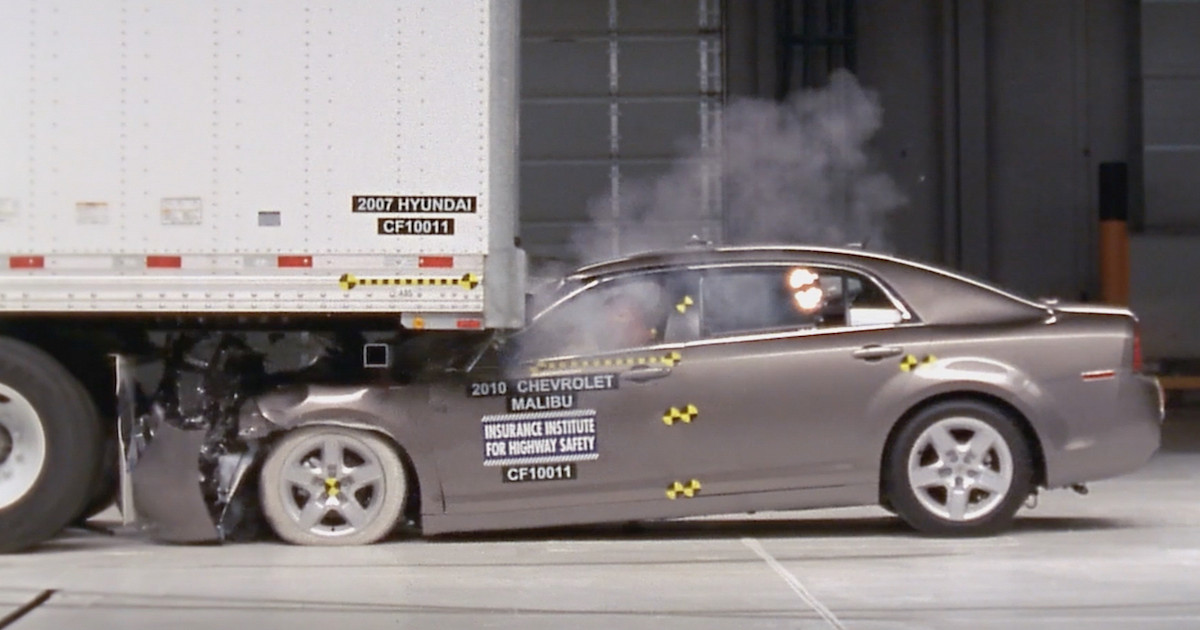This better be good (for whatever that means...)

Welcome to Tesla Motors Club
Discuss Tesla's Model S, Model 3, Model X, Model Y, Cybertruck, Roadster and More.
Register
Install the app
How to install the app on iOS
You can install our site as a web app on your iOS device by utilizing the Add to Home Screen feature in Safari. Please see this thread for more details on this.
Note: This feature may not be available in some browsers.
-
Want to remove ads? Register an account and login to see fewer ads, and become a Supporting Member to remove almost all ads.
You are using an out of date browser. It may not display this or other websites correctly.
You should upgrade or use an alternative browser.
You should upgrade or use an alternative browser.
Tesla, TSLA & the Investment World: the Perpetual Investors' Roundtable
- Thread starter AudubonB
- Start date
It just dawned on me the price of Burnt Hair is so close to the low price TSLA reached In December. Coincidence much?
For Pennsyvania specifically:I agree TACC and autopilot for semi trucks will instantly make our roads MUCH safer for passenger vehicles and pedestrians.
But I couldn’t find number anywhere close to what you saw on that billboard.
According to IIHS “Eleven percent of all motor vehicle crash deaths in 2021 occurred in large truck crashes.”, and “Twelve percent of all passenger vehicle occupant deaths and 22 percent of passenger vehicle occupant deaths in multiple-vehicle crashes in 2021 occurred in crashes with large trucks.”
Edit to add: the hyperlink isn’t working. Here’s the link to the source.

Fatality Facts 2022: Large trucks
A summary of fatality statistics about large trucks compiled by IIHS from 2022 Fatality Analysis Reporting System (FARS) data.www.iihs.org
Those data support your data, suggesting that PA reflects national data, in 2022 heavy trucks were involved in 13.9% of fatalities.
From past data I can no longer find I recall that in Interstate highways when heavy trucks were involved in collisions with passenger cars fatalities in the passenger car occurred in more than 75% of the cases. Some data I find is consistent with that:
"Trends A total of 4,714 people died in large truck crashes in 2021, a 17 percent increase compared with 2020. Sixteen percent of these deaths were truck occupants, 68 percent were occupants of cars and other passenger vehicles, and 15 percent were pedestrians, bicyclists or motorcyclists."
At risk of belaboring the obvious when a huge vehicle crashes with a small one the small one loses!
The Tesla relevance is that Tesla passive safety is perhaps the best that exists. Tesla has survivability in extreme crashes that is well documented, although it is possible to kill oneself in a Tesla, as we know. Further, the accident rates and injury severity in Tesla are both demonstrably excellent.
TACC, autopilot and FSD will continue to be great helps in accident avoidance and severity reduction. All Tesla data clearly shows those data.
This all becomes important to Tesla owners without accidents because insurance rates often are high. Why? Simply because of collision repair costs, diminished value claims (where they exist), and a frequent tendency to declare total loss if anything structural is at risk.
Hibar produced high precision liquid dispensing systems and grew renown with battery production systems: There is no information I can find about their relevance in the dry processes or anything else other than ultra precise liquids.Thanks! I had forgotten about the Hibar purchase. Now called Tesla Toronto Automation. Didn't find detail about what their contribution is to the overall.
There was a new Tesla Automation factory built in Germany, and it may be the more significant source of Tesla's manufacturing equipment.

Tesla acquires Canadian battery specialist, Hibar Systems | Electric Autonomy Canada
Ontario-based company brings specialist battery manufacturing expertise to global EV giant amid talk of “Tesla’s secret battery lab”
They might not be involved in the dry electrode process, but they would absolutely be involved in the process to add the liquid electrolyte to the cells after they have been assembled. (Which is what they specialized in.)Hibar produced high precision liquid dispensing systems and grew renown with battery production systems: There is no information I can find about their relevance in the dry processes or anything else other than ultra precise liquids.

Tesla acquires Canadian battery specialist, Hibar Systems | Electric Autonomy Canada
Ontario-based company brings specialist battery manufacturing expertise to global EV giant amid talk of “Tesla’s secret battery lab”electricautonomy.ca
Artful Dodger
"Neko no me"
There is no information I can find about their relevance in the dry processes or anything else other than ultra precise liquids.
The dry process is just for the deposition of the cathode and anode material onto the conductor. The cell itself still uses a liquid electrolyte, now with at least two (2) separate additives (per Dr. Jeff Dahn's research on battery cell longevity). Those two additives, as well as the electrolyte solvent itself, must be mixed precisely and then metered into each cell. That's the manufacturing tech that Hibar developed, and why Tesla bought them.

Volkswagen slows ID.4 and ID.7 EV production and plans to lay off hundreds of temp workers
Following a smaller than anticipated demand for its EVs built near its Emden facility in Northern Germany, Volkswagen is reducing...
 electrek.co
electrek.co
Didn't they move significant operations to Lathrop and elsewhere this quarter?Latest satellite images from last week don't show any visible construction going on for the expansion in Nevada. And AFAIK the current building is fully used.
-=buzz=-
Member
Maybe, or they repurposed it for powerwalls.Didn't they move significant operations to Lathrop and elsewhere this quarter?
In the renders shown during the expansion announcement they showed the L-shape being turned back into a rectangle by adding two sections for semi production and one section explicitly for 100GWh of 4680 production capacity, for which no apparent construction is taking place yet..
"People don't want EVs. They want Teslas."
Volkswagen slows ID.4 and ID.7 EV production and plans to lay off hundreds of temp workers
Following a smaller than anticipated demand for its EVs built near its Emden facility in Northern Germany, Volkswagen is reducing...electrek.co
-some guy
GhostSkater
Member
Don't know if you guys saw the videos from the new Silverado EV, but was doing some quick maths to compare it with expected Cybertruck performance
Per the GM engineer, while towing they get roughly half of the range, which has been the case from other EV trucks also. He also said that on a 350 kW charger you gain 100 miles of range unloaded or 50 miles while towing in 10 minutes
For Cybertruck, on a V3 Supercharger you would gain 115 miles unloaded or 57 miles towing
If V4 Supercharger is also 350 kW per some leaks it would 162 and 81 respectively
But I'm a little doubtful of it being just 350 kW, I expect more like 500 kW, so that becomes somewhere around 200 and 100 miles respectively
Last one is hard to predict and has big uncertainty because it is really dependent on the charge curve on the 4680s V2, which we will only know once someone tests a Cybertruck on a V4 Supercharger
It will be a towing beast either way even on V3, specially since if the Silverado EV curve is like the Hummer EV, it nose dives after those 10 minutes
Per the GM engineer, while towing they get roughly half of the range, which has been the case from other EV trucks also. He also said that on a 350 kW charger you gain 100 miles of range unloaded or 50 miles while towing in 10 minutes
For Cybertruck, on a V3 Supercharger you would gain 115 miles unloaded or 57 miles towing
If V4 Supercharger is also 350 kW per some leaks it would 162 and 81 respectively
But I'm a little doubtful of it being just 350 kW, I expect more like 500 kW, so that becomes somewhere around 200 and 100 miles respectively
Last one is hard to predict and has big uncertainty because it is really dependent on the charge curve on the 4680s V2, which we will only know once someone tests a Cybertruck on a V4 Supercharger
It will be a towing beast either way even on V3, specially since if the Silverado EV curve is like the Hummer EV, it nose dives after those 10 minutes
Electroman
Well-Known Member
It won't be much different for CT either. Maybe marginally better. Physics is physics.Per the GM engineer, while towing they get roughly half of the range
uscbucsfan
Active Member
I think there's a possibility that the initial CTs use 2170s instead of 4680s.Last one is hard to predict and has big uncertainty because it is really dependent on the charge curve on the 4680s V2, which we will only know once someone tests a Cybertruck on a V4 Supercharger
GhostSkater
Member
It won't be much different for CT either. Maybe marginally better. Physics is physics.
I think there's a possibility that the initial CTs use 2170s instead of 4680s.
On both case Tesla vehicles already have a significantly better charge curve than the Hummer EV, and Silverado uses the same modules if not the same pack
So your range gained by time will be significantly better, specially on the next second set of 10 minutes
The so talked about Ultium while it hits 350 kW and maintain it up to 30% if you start at 10%, it does so in a 250 kWh battery pack, that is just 1.4C charge rate peak
Model 3/Y hits 250 kW up to 20% in a 82 kWh pack, that is a bit over 3C, at 30% it is still at 2.3C
Even if Tesla didn't make any progress in the cells, and as you guys said, the initial version turns out to be 2170s, they will still have a significant lead in range added per minute
If we get a 2170 pack and use on a Supercharger V3, it should maintain flat 250 kW up to 51%, which would take 21 minutes
Zaddy Daddy
Member
I've already linked to the twitter account that tracks Berlin's production in association with vin's being registered that puts Berlin over 5k/week production for around a month now. You can go back to my posts last week where I linked too that......in a response to you in fact. That same Twitter account has Berlin at 4500/week for all of Q2 if you average out the updates
As for Austin, you can go off of Troy's limited Vin information if you want. Fine by me.
Also, I clearly nowhere said that there was evidence of sustained 5k weekly rate from both Berlin and Austin.
Edit: Since I'm feeling generous and saving you the sake of going through my old posts, here :
As you can see, there's a couple week gap between when Tesla announced Berlin 5k/week rate was hit and then it showed up in the Vins. A rate that has stayed consistent since.
Thanks for these plots. This does help persuade that Berlin could be closer to 5000 / week at least a little bit.
The one problem is the application of a bayesian prior in assuming an exponential ramp. This is inherently a forcing function on making the slope (production rate) go up over time even as new data comes in that may not be convincingly higher in VIN numbers. This curve is zoomed at over 1.5 years. If you zoomed in over the past 5 months, the rate of change would not be obvious. That doesn't make it wrong, but just indicates that the near term VIN data isn't convincingly showing an uptick in production rate.
ZeApelido
Active Member
Don't know if you guys saw the videos from the new Silverado EV, but was doing some quick maths to compare it with expected Cybertruck performance
Per the GM engineer, while towing they get roughly half of the range, which has been the case from other EV trucks also. He also said that on a 350 kW charger you gain 100 miles of range unloaded or 50 miles while towing in 10 minutes
For Cybertruck, on a V3 Supercharger you would gain 115 miles unloaded or 57 miles towing
If V4 Supercharger is also 350 kW per some leaks it would 162 and 81 respectively
But I'm a little doubtful of it being just 350 kW, I expect more like 500 kW, so that becomes somewhere around 200 and 100 miles respectively
Last one is hard to predict and has big uncertainty because it is really dependent on the charge curve on the 4680s V2, which we will only know once someone tests a Cybertruck on a V4 Supercharger
It will be a towing beast either way even on V3, specially since if the Silverado EV curve is like the Hummer EV, it nose dives after those 10 minutes
I can't wait for the goalposts to move further to "I can't roadtrip with an EV because I need to stop only 5 minutes every 5 hours to pee in a bottle while towing 6000 lbs, until an EV can do that no one will buy it".
loquitur
Member
Although the Frontline program based upon the following ProPublica article is only Tesla-adjacent,I agree TACC and autopilot for semi trucks will instantly make our roads MUCH safer for passenger vehicles and pedestrians.
But I couldn’t find number anywhere close to what you saw on that billboard.
According to IIHS “Eleven percent of all motor vehicle crash deaths in 2021 occurred in large truck crashes.”, and “Twelve percent of all passenger vehicle occupant deaths and 22 percent of passenger vehicle occupant deaths in multiple-vehicle crashes in 2021 occurred in crashes with large trucks.”
Edit to add: the hyperlink isn’t working. Here’s the link to the source.

Fatality Facts 2022: Large trucks
A summary of fatality statistics about large trucks compiled by IIHS from 2022 Fatality Analysis Reporting System (FARS) data.www.iihs.org
it's shocking to still see deliberate underreporting of truck "underride" disasters. The industry in the US
won't install sideguards until the statistics are hardened enough to provide cost-benefit analyses.
I imagine that Teslas on highways have evasive strategies of how not to get squeezed (off the road
or otherwise) by 18-wheelers this way:

Trapped Under Trucks: The Inside Story of the Government’s Failure to Prevent Underride Crashes
For decades, federal safety regulators ignored credible scientific research and failed to take simple steps to stop gruesome roadway crashes involving heavy trucks. Meanwhile, the bodies piled up.
MOAR revenue @wallstreetClowns


I'm sure you have noticed it as well but it's wild how large a % of the population regularly travels across the country with a fully loaded horse trailer. Gotta be like 30% if social media is to be trusted.I can't wait for the goalposts to move further to "I can't roadtrip with an EV because I need to stop only 5 minutes every 5 hours to pee in a bottle while towing 6000 lbs, until an EV can do that no one will buy it".
Drumheller
Active Member
While I agree with this, I find it equally ridiculous when people here claim a gas fillup takes 20 minutes.I can't wait for the goalposts to move further to "I can't roadtrip with an EV because I need to stop only 5 minutes every 5 hours to pee in a bottle while towing 6000 lbs, until an EV can do that no one will buy it".
willow_hiller
Well-Known Member
MOAR revenue @wallstreetClowns

I wonder if this is related to this recent release from Tesla on Github: GitHub - teslamotors/fleet-telemetry
"At Tesla we believe that security and privacy are core tenets of any modern technology. Customers should be able to decide what data they share with third parties, how they share it, and when it can be shared. We've developed a decentralized framework: "Fleet Telemetry" that allows customers to create a secure and direct bridge from their Tesla devices to any provider they authorize. Fleet Telemetry is a simple, scalable, and secure data exchange service for devices.
Fleet Telemetry is a server reference implementation. The service handles vehicle/device connectivity, receives and stores transmitted data. Once configured, devices establish a websocket connection to push configurable telemetry records. Fleet Telemetry provides clients with ack, error, or rate limit responses."
Similar threads
- Locked
- Replies
- 0
- Views
- 4K
- Locked
- Replies
- 0
- Views
- 6K
- Locked
- Replies
- 11
- Views
- 10K
- Replies
- 6
- Views
- 5K
- Locked
- Poll
- Replies
- 1
- Views
- 12K


